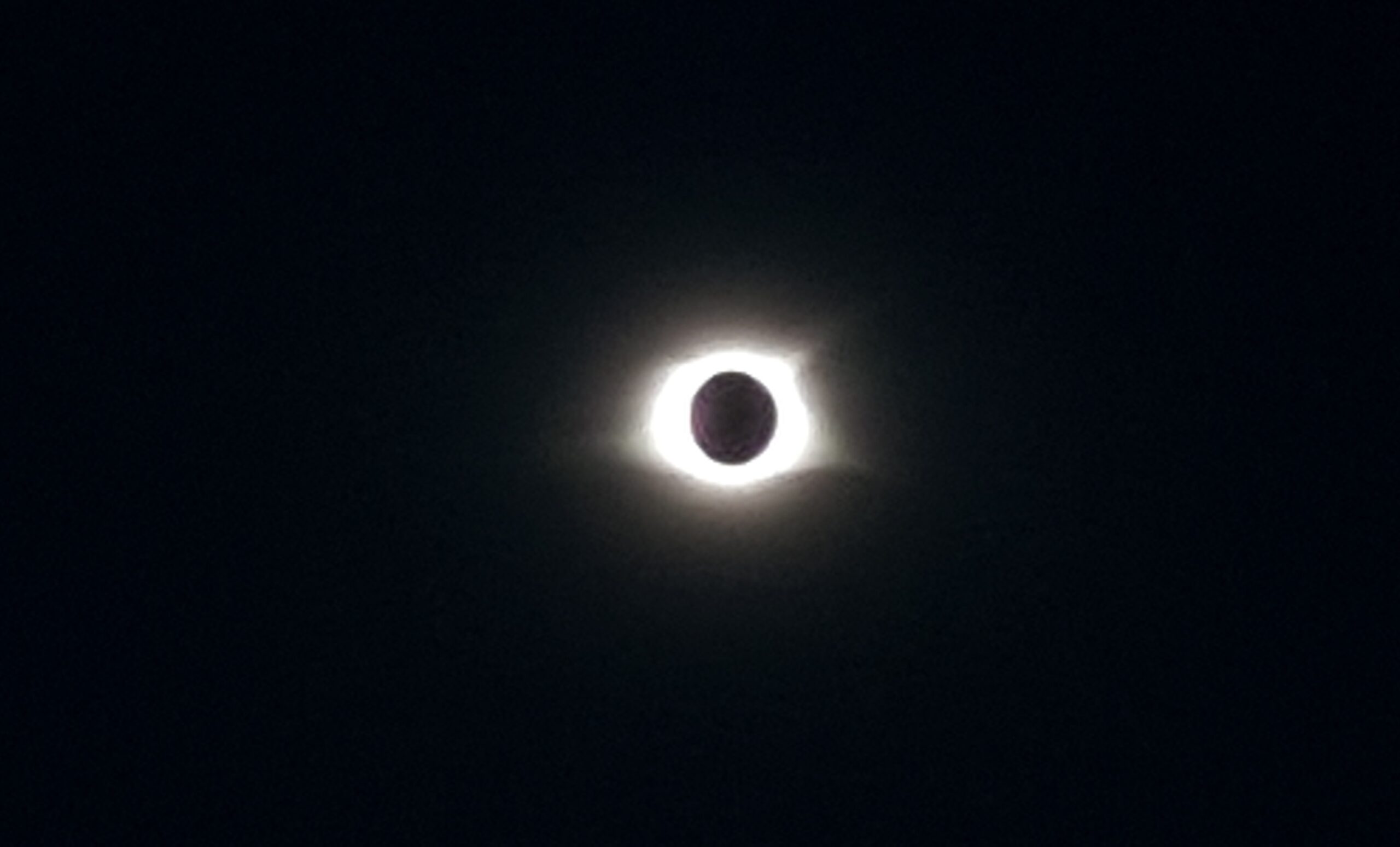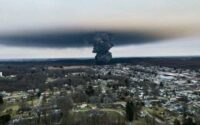The Astrology of Comets Part 1 – Divine Fire From Sky
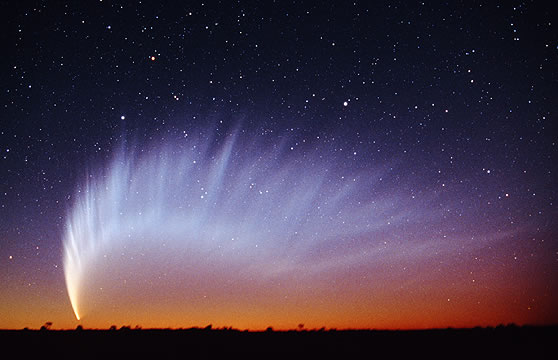
With the appearance of Comet Neowise F3 C/2020, I thought I should clarify my theory on comets and how they are used, and can be used in astrology. Not much is written on the subject of comets and astrology. I have over 80 astrology books on my bookshelf and only three of them have any information about comets in them. All but one of them were written before 1930.
So this is a major topic in astrology today that needs more to be written about. This is my contribution. A 4 part piece on the Astrology of Comets. This was put to together from the research I did after discussing the appearance of Comet NEOWISE F3 C/2020 with a few of my astrology friends.
The Ancient Understanding of Comets
Why are comets not better understood by astrologers? I think the main reason for this is that before the late Renaissance Era comets were thought to be an atmospheric phenomenon. Aristotle thought that comets were an ignited gasses in the atmosphere that never reach the heavenly sphere of the Moon which separated the heavens from the earth [1]. This was the main scientific theory for a long time and it meant that the divination of comets fell under auspices and not astrologer.
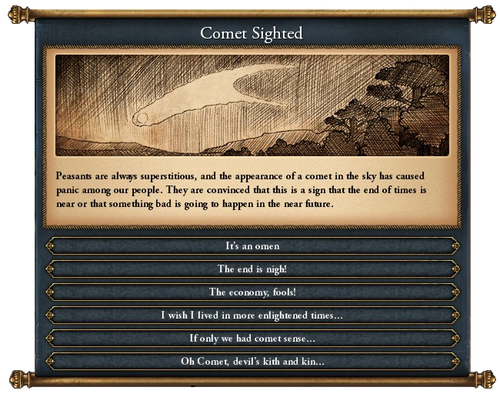
Auspices are a group of closely related divination techniques related to interpreting events in the sky, such as augury, which interpreted how birds flew in the sky. A good reference to this practice is describe in Agrippa Book 1 Chapter 54 [2]. Agrippa goes on in Book 1 Chapter 58 to further describe comets as falling under the realm of pyromancy, the magic of fire. Interpretation of them was strictly done by pyromancers [2].
This is why many of the interpretations given in ancient test, such Pliny’s Natural History rely on the shape of the comet, not the position in the sky [1]. One can seen this in the many stories passed down about comets too. Julius Caesar’s soul was carried to heaven by a comet after his assassination in 44 B.C [1, 3, 4]. Another popular story is that of the appearance of Halley’s Comet over England in 1066 foretelling the death of Harold II and the conquering of England by William I of Normandy [1, 3].
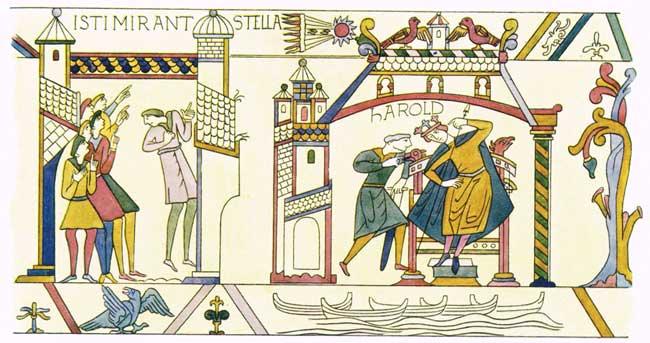
Because other diviners were doing the work, most astrologers of the ancient world did not use comets in their interpretations. While this has change since comets were proven to a be a space based phenomenon, this disconnect has carried into modern times as many astrologers don’t use comets in their charts. In fact, most astrology software does not support the use of newly discovered comets in the charts which makes it harder for modern astrologers to use them.
The Modern Astronomy of Comets
It wasn’t until Tycho Brache and Micheal Maestin measured the parallax of the the Great Comet of 1577, that comets were proven to be a heavenly phenomenon. It took Edmund Halley nearly 100 years later to recognized they orbited around the Sun. Before then comets were thought to travel only thought to travel in straight lines in the heavens [5].
Nowadays, scientist now recognize that comets fall into 3 basic categories based on their orbit. The first type are Short Period Comets. These are comets like Halley’s Comet and they typically have orbital periods of 200 years or less.
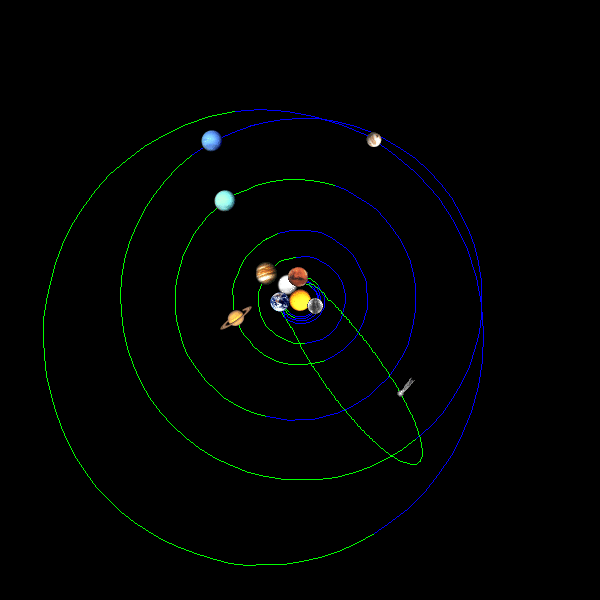
The next type are Long Period Comets. These comets have highly eccentric orbits that are typically much longer than 200 years. In many cases several thousand years long. Comet Neowise F3 C/2020 is this type of comet with an estimated orbital period of over 10,000 years.
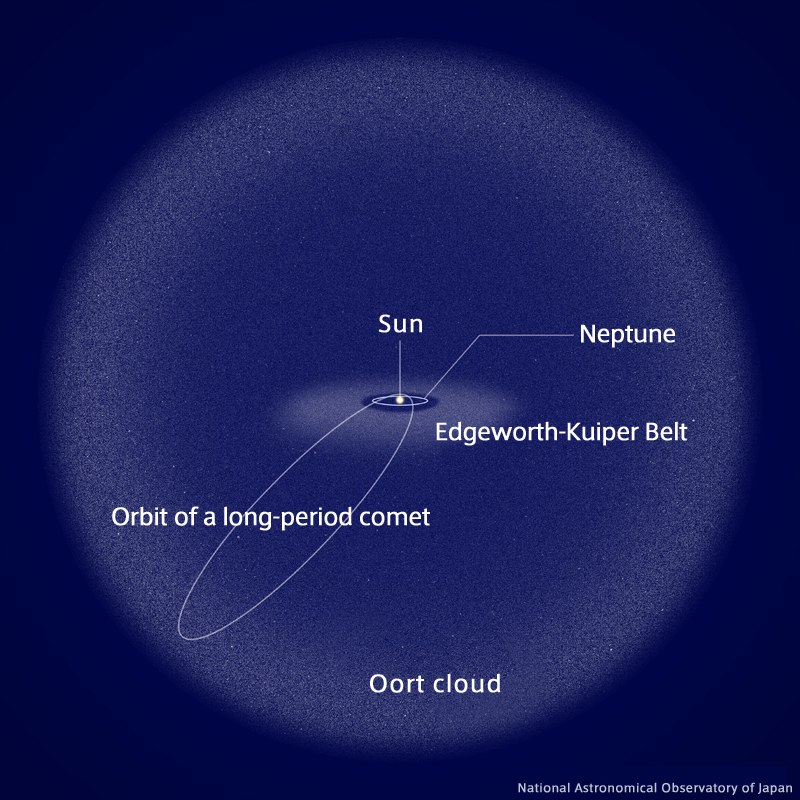
The final type of comet are Hyberolic Comets. These comets come from the Oort Cloud or even from beyond our Solar System. These comets pass by the Sun and often never return, leaving the Solar System for good.

The reason why I use the word often here is the at the orbits of comets are very unstable. Comets orbits can often switch between Short Period, Long Period, and Hyperbolic very easily. This is especially true if they come near Jupiter, whose gravity often causes comets to change orbits. Therefore, scientist must constantly observe comets to determination what their next orbit will be like.
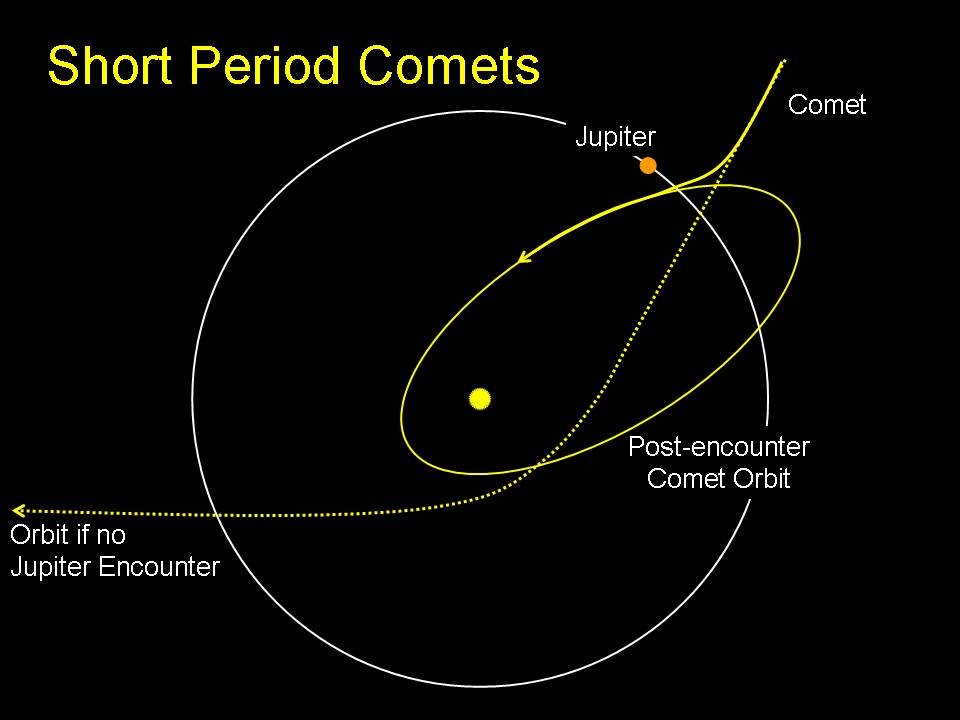
To the modern observer, a comet has three distinctly different characteristics compared to other objects in the Solar System. The first is a nucleus, which is very similar to an asteroid in size and appearance and typically no more than 60 km wide. The second is a coma or a gravitationally unbound atmosphere surrounding the nucleus which can expand in size to larger than Sun. The third is a tail that is composed of dust and gasses that are left behind from the coma. Tails can become ionized and are shaped the by the solar wind.
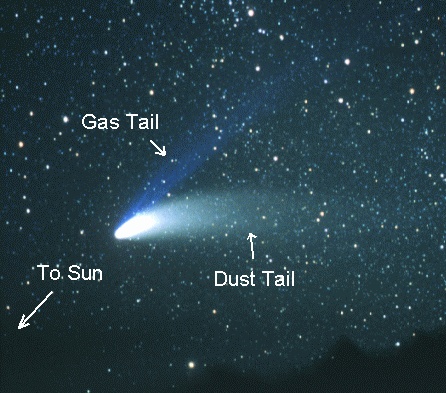
This definition is by no means without debate. Several asteroids and other objects in the Solar System have comet like properties such as comas or tails or both that make them hard to classify. The most common example known to both astronomers and astrologers is Chiron. When discovered Chiron was without a coma and and a tail but as it approached it perihelion it first developed a coma and then a tail several years later. Many astrologers describe Chiron as a comet because of this.
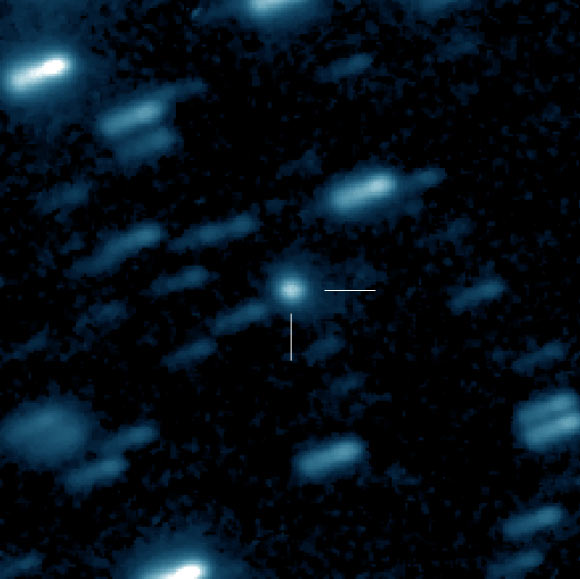
The standard scientific theory of how a comet is so bright, despite being so small, is that it is mainly composed of ice or other volatile compounds that evaporate once it gets closer to the Sun. This is the called Dirty Snowball Hypothesis. This model is undergoing some major changes after several spacecraft visited comets to observe them closely. One spacecraft called Deep Impact, even bombed a comet, which produce considerable scientific data revising this hypothesis away from comets being mostly ice to being mostly made of dust.
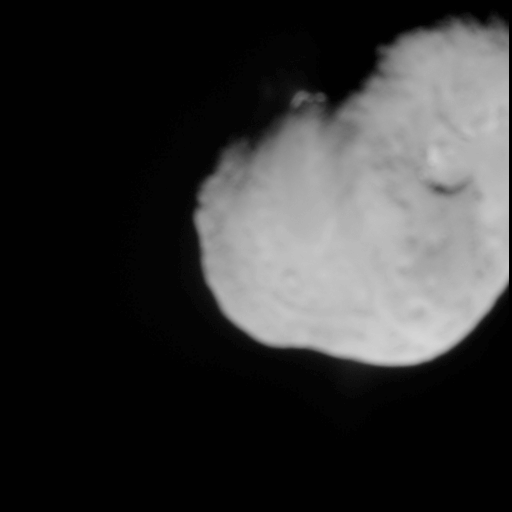
There is an alternative hypothesis of the why comets are bright. This is called the Electric Comet Hypothesis. In this theory comets have a net negative electrical charge that is gathered from time spent in the outer Solar System. When they move closer to the Sun, they light up like a negatively charged cathode in a vacuum. This produces the coma which is partially electrical bound to the comet nucleus. The electrically charged solar wind then forms the tail of the comet.
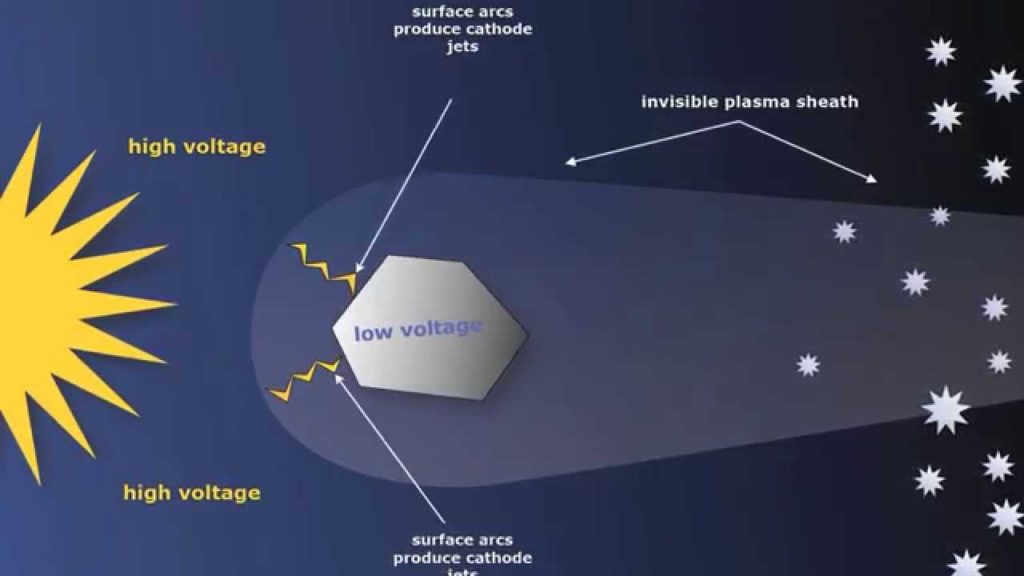
Scientist have accepted some aspects of this model as they generally agree that many comets have an ion tail in addition to a dust tail. But most scientist don’t accept the theory of ion jets forming the comet’s coma and dust tail. I am not sure why this theory isn’t more popular because, unlike a lot of other alternative scientific theories, this one can easily be duplicated in laboratory conditions using standard plasma physics that have been scientifically accepted for over a century. Additionally, this theory is a much better predictor of the results of our spacecraft missions to comets including the a fore mention Deep Impact Mission.
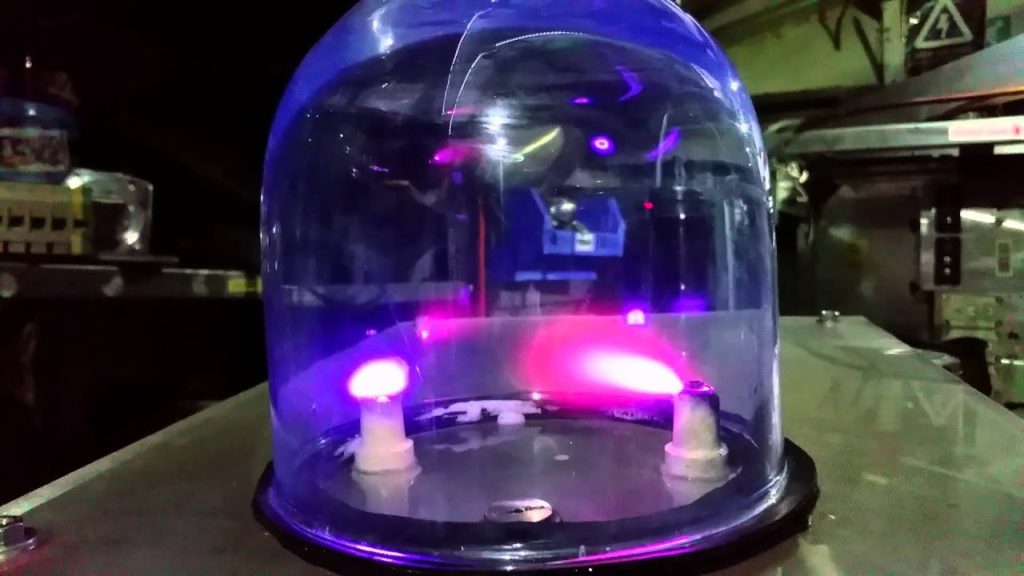
After reviewing the evidence for myself, I think that the Electric Comet Hypothesis proves the better explanation for what we observe in comets. For instance, every time we have observed a comet up close with our spacecraft they appear to to be more like asteroids in composition then we previously believe. The theory of a plasma atmosphere for the coma and tail of a comets seems more more reasonable too, since plasma can easily produce light itself rather than just reflecting it off the Sun, which would require a massive amount of debris.
The Elemental Composition of Comets
Based on the modern observations, let’s discuss the elemental composition of comets. I have discussed the four elements before here, and have shown how they are good analogies for some more modern scientific theories and concepts. I think this can apply to comets too. In the past comets where thought to composed of one or two elements based on the atmospheric theory. First some thought they were “air” because they were also considered to be made of gases of the atmosphere. Others thought they were “fire” because they sometimes looked like flaming swords in the sky.

In modern times this has changed somewhat. If we take the Dirty Snowball Hypothesis of comet as composed of mostly of ice, then obviously we would assign them the element of “water”. However if we take the Electric Comet Hypothesis, we would still get “fire”, since plasma is a the modern version of the fire element as it is one of the primary four states of matter found in the universe.
Is there any evidence elemental composition of of comets? The results are a varied. Generally comets are tied to disasters such as flooding, disease, penitence, war, and death. While the flooding does primarily relate to the water element, most of the rest of these situations relate to fire, mostly through associations with Mars. Who nature, like comets is to disrupt.
Since I do think the Electric Comet Hypothesis is correct, I therefore conclude that comets are primarily elemental fire. This is because while the nucleus of the comet is small, the coma and tails, which are composed of plasma, makes up a majority of the comet’s volume The effect of comets can be big, and even more potent than planets for a time, despite their small relative size. And the element can have biggest effect is the fire element, since in western ceremonial magic theory all other element emerge from it.
Tarot Correspondence
Another way to look at comets is through the tarot. Each tarot card except three of them, correspond to an astrological concept It is either through a sign, planet, decan, or quadrant of the sky. Those three cards that don’t are the Fool, the Hangman, and Judgement. These correspond to elemental air, water, and fire respectively. For the propose of comets, which I think are nearly 100% elemental fire, we should primarily look at the card of Judgement, which is called Aeon in some decks.
The image on this card for most decks looks like the Christian Final Judgement and the raising of the dead. But the card has a much deeper meaning as the card of divine fire that descend down on the initiated. Kind of like how the Christians believe that the Holy Spirit descends onto people in tongue of fire (Acts 2:3). Modern Catholics have the ceremony of Confirmation that fully initiate them into the Church to honor this passage. Tarot readers usually interpretation of the Judgement card is a right of passage, transition, release, and maturing in its highest sense, despite the image on the card.
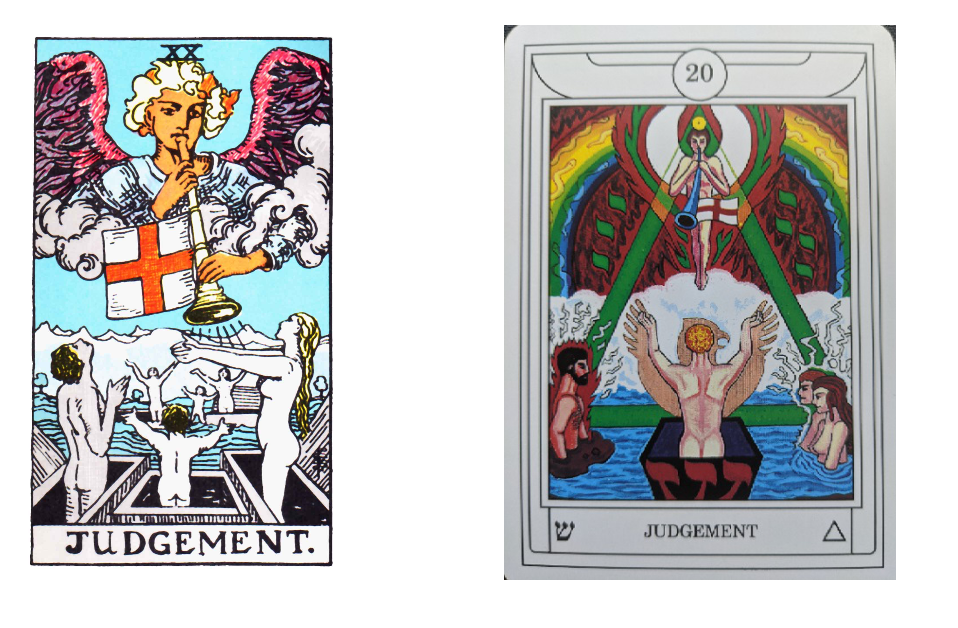
At the more mundane reading, this can refer to any change instate whether positive or negative. While the Tower card is associated with sudden changes and disruptions, most of negative interpretations comets bring are not necessarily Tower related. Sure war is violent, but it rarely is sudden, and often only the soldiers are killed on the battle field. Death of great leader, while negative, surely doesn’t mean that is wasn’t the right time to go for the person. They may have completed their life’s mission and were ready to move on.
This also means that comets can be interpreted very positively too. A good example of this type of experience of comets as a divine fire that initiates is found here online on http://neelastro.in/comets/ by an unnamed author:
Master [Canchupati Venkatarao Venkaswamy Rao] CVV carried out supernatural practices during his life and most of them were unknown to the world until 1910. On a night in 1910, at zero hours, a great light made its way into the Master CVV’s house like a lightning. That light related to a Comet, which was in the earth’s orbit during those days. That Comet was the Halley’s Comet. Master CVV explained later to people that during that night, the earth was passing through the tail of the Comet… Those who observed the light passing through Master CVV’s house ran up to the house looking for any damage. On entry into his house, they found Master CVV in deep meditation. Master CVV explained that the planetary ether, which would be responsible for his future plan of work established co-operation with him that night. From that time, those who saw him and spoke to him felt a distinct magnetic and divine attraction in his presence. He is considered an incarnation of Sage Agastya… From his life we understand that the appearance of Halley’s Comet is not a mere cosmic phenomenon at a physical level, but one which bears significant spiritual connotations.” [5]
Excerpt from: http://neelastro.in/comets/
This passages shows a disruptive change brought by a comet, but unlike the tradition thoughts of comets resulting negative events, this is very positive event. For those who are spiritually inclined, they can use the comet to initiate themselves to higher calling and make positive changes in their life.
The flip side to this is that if one isn’t used to working with the excess fire it can often become like the reverse interpretation of the Judgement card, they become stuck and unwilling to move forward or they can be judged. If they are judged by the Universe itself, their lives may get disrupted though war famine, or flooding, similar to the much more popular interpretations of comets found throughout history.
The Astrology of Comets Part 2: Placing the Comet in the Chart
The Astrology of Comets Part 3: Basic Natal & Transit Interpretation
The Astrology of Comets Part 4: Mundane Interpenetration & Electional/Horary Considerations
Sources:
[1] Farnell, Kim; The Little Book of Comets and Astrology; Self Published; 2020; ISBN 9798628223536
[2] Agrippa, Henry Cornelius; Three Books of Occult Philosophy: The Foundation Book of Western Occultism; Edited and Annotated by Donald Tyson; Llewellyn Publications; First Edition, Second Printing 2019; ISBN 978-0-7387-5527-4
[3] Chang, Rod; “Comets in Astrology – Possible Meanings of These Celestial Events”; first published by The Astrological Association of Great Britain; 10/30/2014; https://www.astro.com/astrology/aa_article141030_e.htm; Accessed 8/4/2020
[4] MacDonald, Eve; “Myths and Meteors: How Ancient Cultures Explained Comets and Other Chunks of Rock Falling From the Sky”; 8/18/2018; https://www.ancient-origins.net/news-science-space/ancient-meteor-0010564; Accessed 8/4/2020
[5] “Comets”; http://neelastro.in/comets/; 3/1/2016; Accessed 8/4/2020
edited on 8/16/2020 to mostly correct spelling and grammar errors
